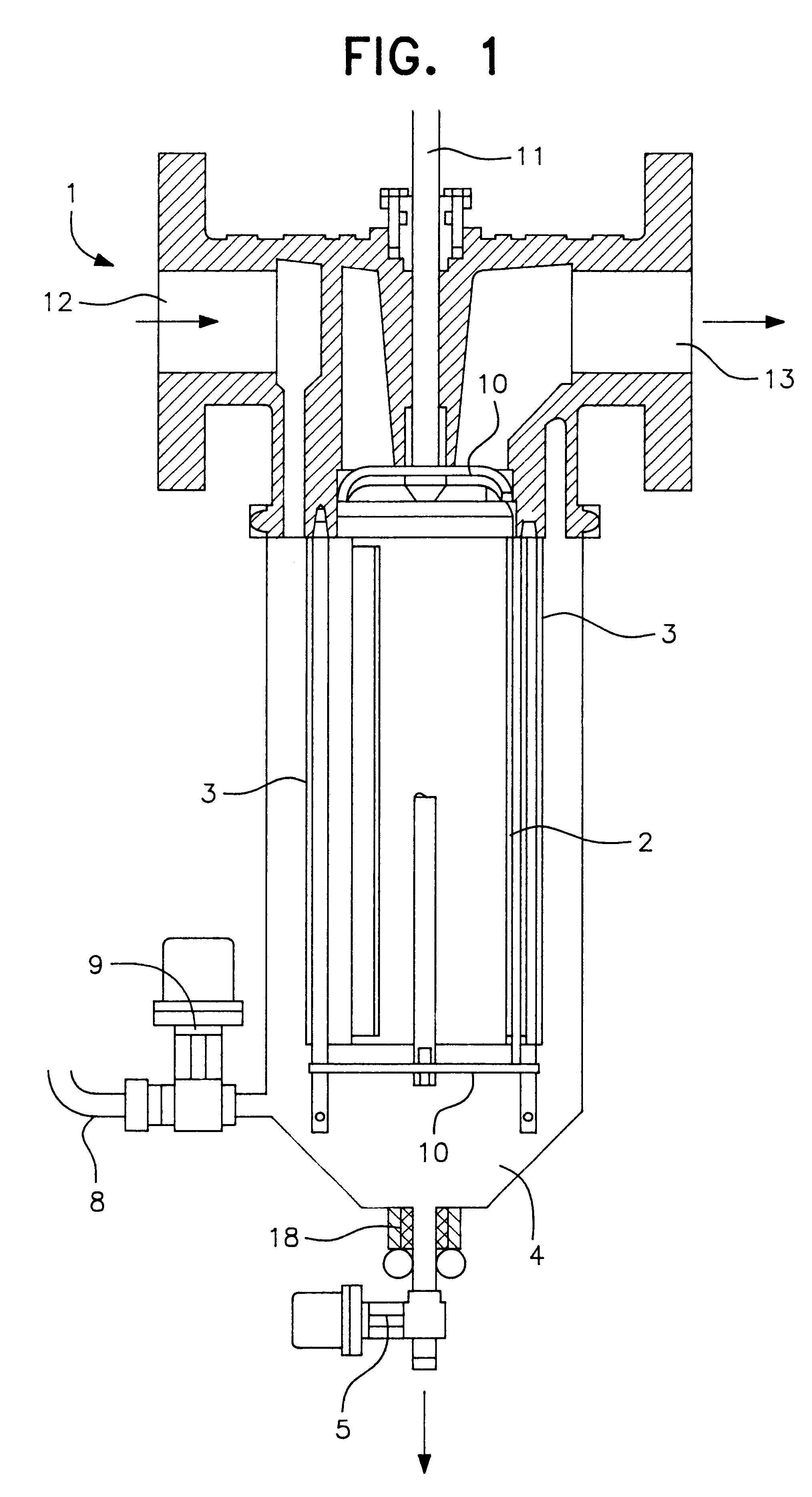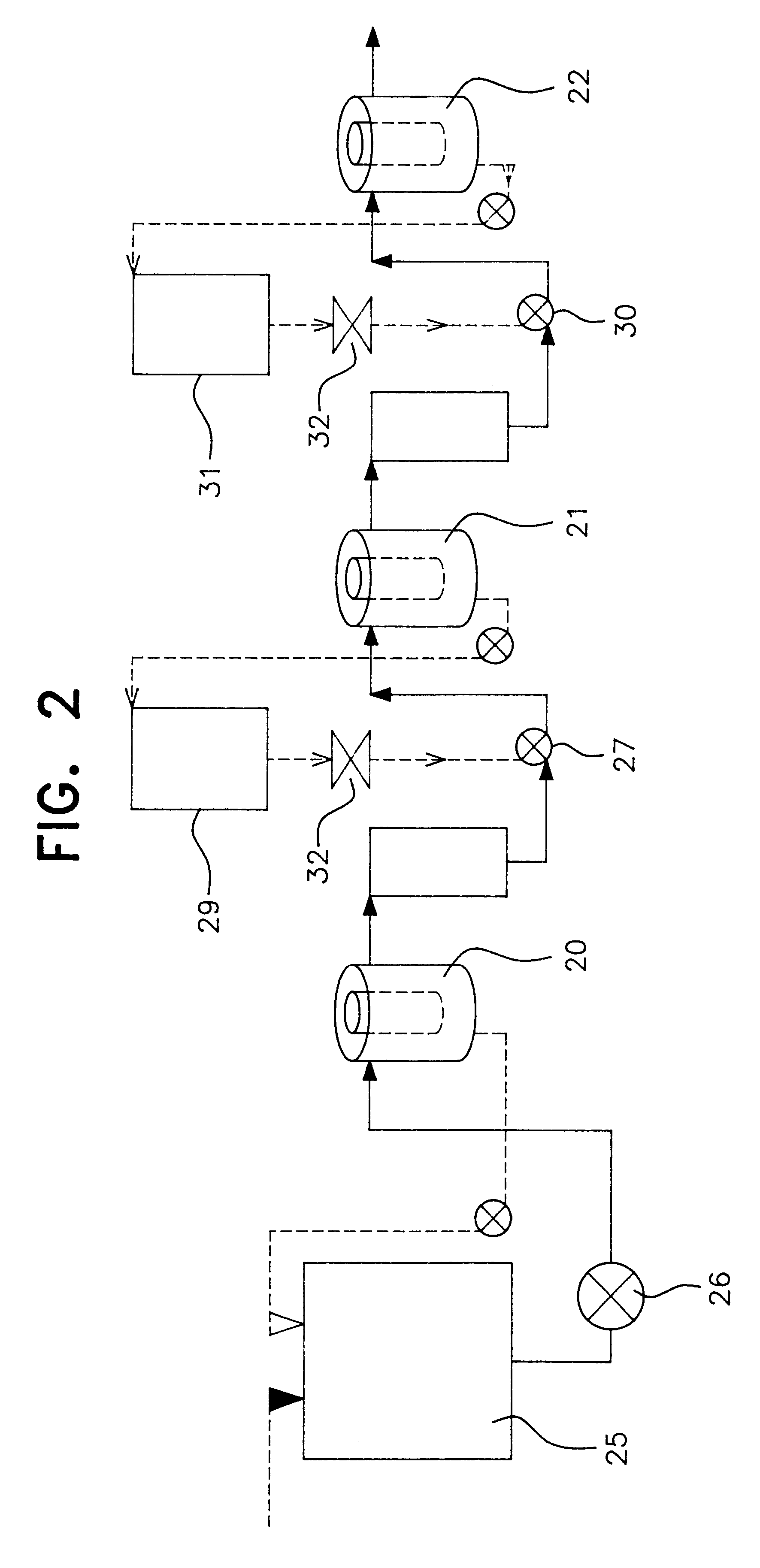Method for the production of metallic flake pigments
a technology of metallic flake pigment and manufacturing method, which is applied in the direction of pigmenting treatment, etc., can solve the problems of limited multi-product production yield, large space requirement, and high over-size build-up on the screen, and achieves efficient classification, high flexibility of simultaneous production, and improved product quality
- Summary
- Abstract
- Description
- Claims
- Application Information
AI Technical Summary
Benefits of technology
Problems solved by technology
Method used
Image
Examples
example 2
As for Example 1 to produce leafing grade type 130 paste. In this case the screening was carried out by an in-line screening unit fitted with 55 micron cylindrical rotary screen of diameter 2 inches as described above.
The operational parameters as well as the product properties of 130 aluminum pastes produced according to the Examples 1 and 2, were compared. The results are shown in table 1.
example 3
As in Example 2, with an increased stearic acid content (12 lb instead of 9 lb). The milled slurry was passed through a series of three screen units connected in sequence according to their screen sizes, for example 100 micron, 55 micron and 40 micron. The oversize residues collected from the 55 micron and 40 micron screens were passed through the respective screens at least 3 times to remove most of the finer particles. The residues from the 55 micron and the 40 micron screens were filtered through a small filter press and the filter cakes of the individual products were blended with the required amount of mineral spirit to form pastes containing 70% solids. These pastes were compared with a product 10C manufactured as a precursor of standard commercial grade leafing powder (905 of U.S. Aluminum), singularly or in combination. Similarly, the screened slurry from the 40 micron screen was also filtered separately and the filter cakes were blended and compared with an aluminum paste m...
example 4
The residues collected as oversize particles from the screening units fitted with 55 micron and 40 micron screens as in Example 3 were blended and compared with a leafing paste produced as a precursor of a standard grade aluminum powder, 905, of US Aluminum.
PUM
| Property | Measurement | Unit |
|---|---|---|
| diameter | aaaaa | aaaaa |
| screen sizes | aaaaa | aaaaa |
| screen sizes | aaaaa | aaaaa |
Abstract
Description
Claims
Application Information
 Login to View More
Login to View More - R&D
- Intellectual Property
- Life Sciences
- Materials
- Tech Scout
- Unparalleled Data Quality
- Higher Quality Content
- 60% Fewer Hallucinations
Browse by: Latest US Patents, China's latest patents, Technical Efficacy Thesaurus, Application Domain, Technology Topic, Popular Technical Reports.
© 2025 PatSnap. All rights reserved.Legal|Privacy policy|Modern Slavery Act Transparency Statement|Sitemap|About US| Contact US: help@patsnap.com


